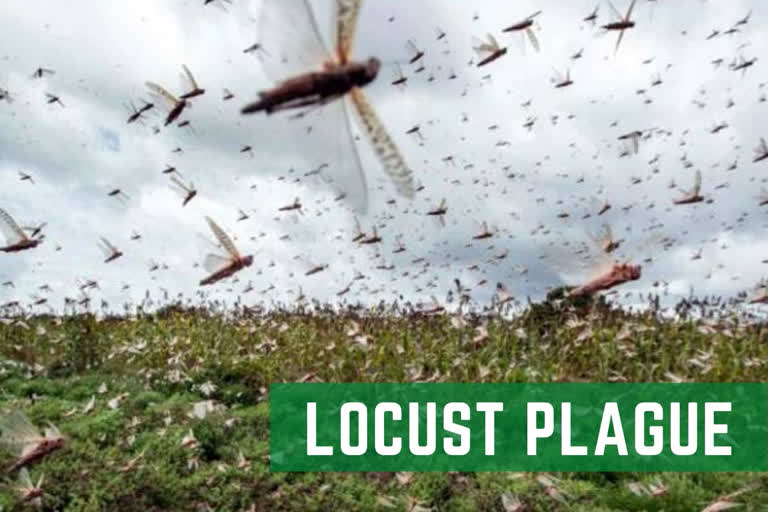Hyderabad: India is currently reeling under the worst plague of locusts, a crop-damaging migratory pest, in decades.
India has not witnessed any full-blown locust cycles after 1962. However, during 1978 and 1993, large-scale upsurges were observed. Localised locust breeding was controlled in 1998, 2002, 2005, 2007 and 2010.
The current locust outbreak appears to result from cyclones which affected the Arabian Peninsula in 2018, together with warm weather at the end of 2019 which was also combined with heavy rains in East Africa.
What is a locust plague?
Locust is an insect that belongs to the family of grasshoppers. These insects are essentially harmless unless they meet certain circumstances under which they become more abundant and change their behaviour.
When these locusts meet suitable environmental conditions, they become congenial and start breeding abundantly. With their population becoming denser, they form swarms and keep moving across areas damaging the crops.
Read:Invasion of Locusts: Start-Up engaged in finding solution via technology
These swarms attacking crops and thereby devastating the entire agricultural economy is what is commonly referred to as locust plague.
Usually, the locust swarms enter the scheduled desert area of India through Pakistan for summer breeding in the month of June/July with the advent of monsoon.
This year, however, incursions of locust hoppers and pink swarms have been reported much earlier because of the presence of the residual population of locust in Pakistan which they couldn't control last season.
The government has stepped up efforts to control swarms
A few countries such as Somalia and Pakistan have declared the locust outbreak as a national emergency.
Given the agricultural landscape of our country, India too needs to deal with this as the top priority.
The Ministry of Agriculture, Government of India too in its contingency plan has recommended Malathion pesticide (an organophosphate pesticide) using aerial spraying, or application by the tractor.
The nodal authority for dealing with locusts is the Locust Warning Organisation (LWO) under the agriculture ministry.
The government has placed an order for buying 60 spraying machines from UK-based company Micron, and two firms have been finalised for the supply of drones for aerial spraying of insecticides for effective control over tall trees and inaccessible areas.
Read:NGT refuses plea for implementation of Centre's contingency plan to control locust attack
At present, 89 fire brigades for pesticide spray, 120 survey vehicles, 47 control vehicles with spray equipment and 810 tractors mounted sprayers have been deployed for effective locust control, as per requirement on different days.
Currently, the Locust Control Offices have 21 Micronair and 26 Ulvamast spray machines which are being utilized for locust control.
Meanwhile, supply order for procurement of an additional 55 vehicles has been placed to strengthen the control potential. Adequate stock pesticide Malathion has been maintained at Locust Control Organisations.
India is also scrambling drones, sending teams to spray insecticide and issuing alerts to states.
The drones are helping track the voracious insects as they destroy crops, increasing fears over food security and economic malaise in a country already battered by the coronavirus pandemic.
(With inputs from PTI and ANI)
Also Read:Locusts Invasion: Start-Up engaged in finding solution through technology
